Quan Thanh Temple: Discover the Spiritual Heart of Hanoi
One of the most respected cultural and religious structures in Hanoi, Vietnam, is the ancient Taoist sanctuary known as Quan Thanh Temple. This temple welcomes guests to discover a realm where mysticism and history converge with its breathtaking architecture, rich history, and spiritual significance. Allow MOTOGO Tours to escort you through this holy site’s interesting history.
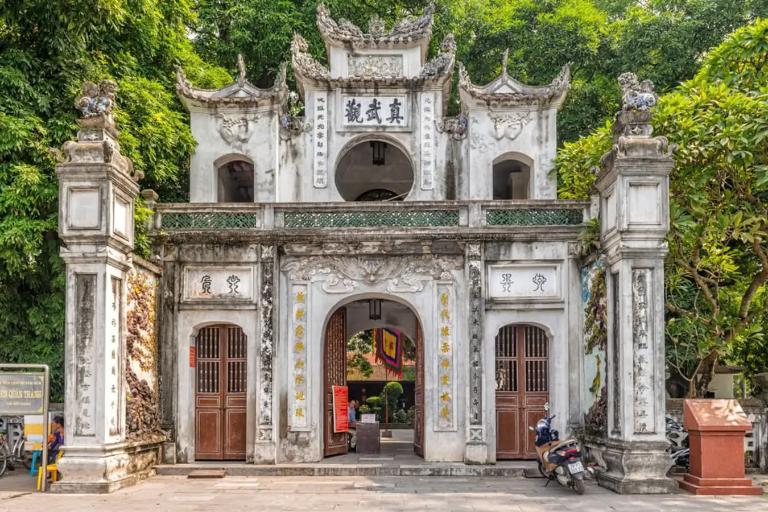
What is the location of Quan Thanh Temple?
One of the most central and ancient parts of Hanoi is the Ba Dinh District, where Quan Thanh Temple is located. It is precisely located close to the serene West Lake (Ho Tay) and Truc Bach Lake at the intersection of Thanh Nien Road and Quan Thanh Street. In addition to being an important place of worship, the temple is a part of Hanoi’s wider network of historical and cultural sites.

It sits near other major attractions, such as the Imperial Citadel of Thang Long and the Ho Chi Minh Mausoleum, making it a convenient stop for tourists exploring the city’s rich heritage.
Historical Background of Quan Thanh Temple
Quan Thanh Temple, also known as Tran Vu Quan, traces its roots back to the Ly Dynasty, specifically to the reign of Emperor Ly Thai To in the 11th century. The temple was originally built in 1010, the same year the emperor moved the capital of Vietnam to Thang Long (modern-day Hanoi).
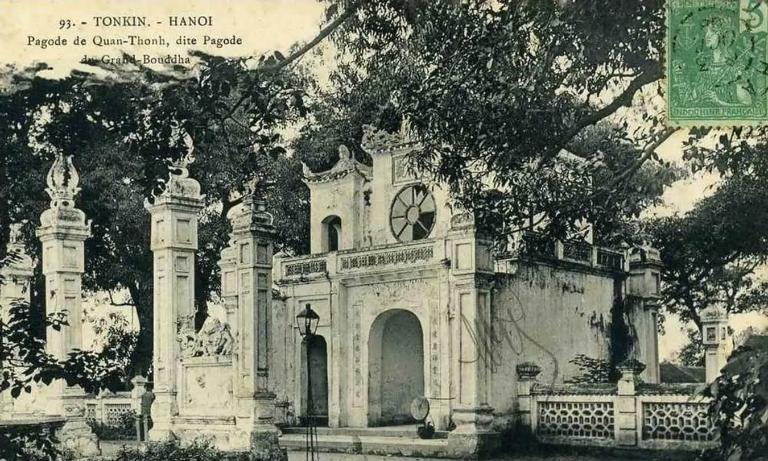
Quan Thanh was constructed to honor the Taoist deity Tran Vu, a revered figure in Vietnamese spiritual life, often associated with protection and peace. The temple was strategically located at the northern gate of the ancient city of Thang Long, which was believed to be the most vulnerable direction to attacks from invaders. As such, Quan Thanh Temple symbolized both spiritual and physical protection for the city.
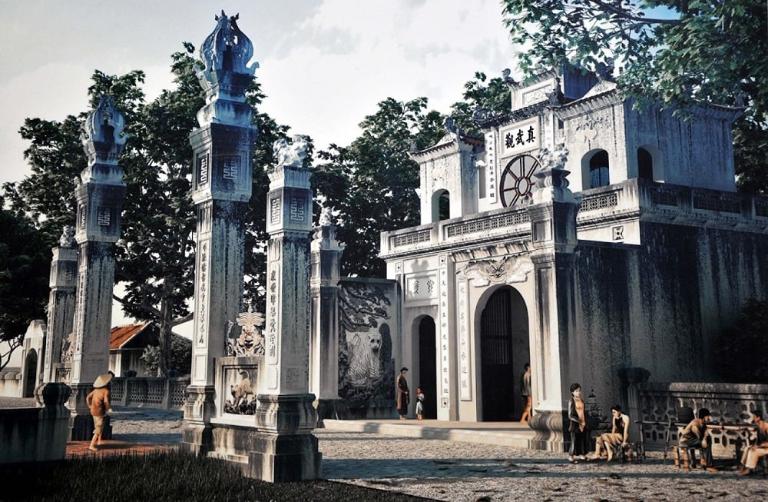
Over the centuries, the temple has undergone several renovations and reconstructions, each time adapting to the architectural styles and needs of the era while preserving its core Taoist principles. This renovation not only expanded the temple’s physical presence but also enhanced its spiritual significance, making it one of the most important Taoist temples in the region.
Design and Structure of the Quan Thanh Temple
The layout of Quan Thanh Temple is designed to represent both physical and spiritual balance. Upon entering, visitors are greeted by a grand Tam Quan (three-arched gate), which is a classic feature of Vietnamese temples. This gate symbolizes the transition from the outside world to the sacred space within.
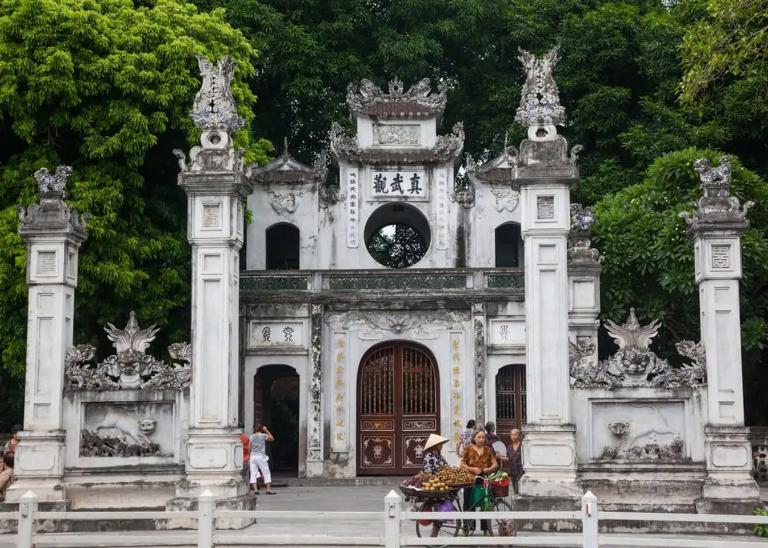
Each of the three gates serves a symbolic purpose: the central arch is reserved for deities and religious figures, while the side arches are for everyday visitors. The intricacy of the carvings on these gates demonstrates the exceptional skill of the artisans who crafted them.
Once inside, the temple is structured around a peaceful courtyard, which is surrounded by various halls and altars. The central sanctuary houses the revered statue of Tran Vu, the temple’s primary deity. The entire structure is aligned according to feng shui principles, believed to channel spiritual energy for the protection and prosperity of the temple and its visitors.
>>> Let’s see more: Temple of Literature | A Timeless Tribute to Vietnamese Education
Important Aesthetic Details of Quan Thanh Temple
Quan Thanh Temple’s architectural features are evidence of the exquisite workmanship of prehistoric Vietnam. The following are a few of the standout attributes:
Figure of Tran Vu in bronze
The bronze statue of Tran Vu, which stands 3.96 meters tall and weighs around 4 tons, is the temple’s most recognizable feature. Every little detail, including the wrinkles in his robe and the looks on his face, has been painstakingly carved into the bronze, demonstrating the amazing craftsmanship. The monument incorporates regional artistic sensibility together with the influence of traditional Taoist iconography. One of Vietnam’s biggest and most significant bronze sculptures, it stands for protection, strength, and wisdom.

Intricate Roof Design
Quan Thanh Temple’s roof is an architectural marvel, with several layers and ornamental features like clouds, phoenixes, and dragons. These patterns stand for endurance, strength, and prosperity—all prevalent themes in Vietnamese culture. Traditional Vietnamese architecture is distinguished by its multi-tiered, raised roof edges, which are intended to both attract good spiritual energy and fight off evil spirits.
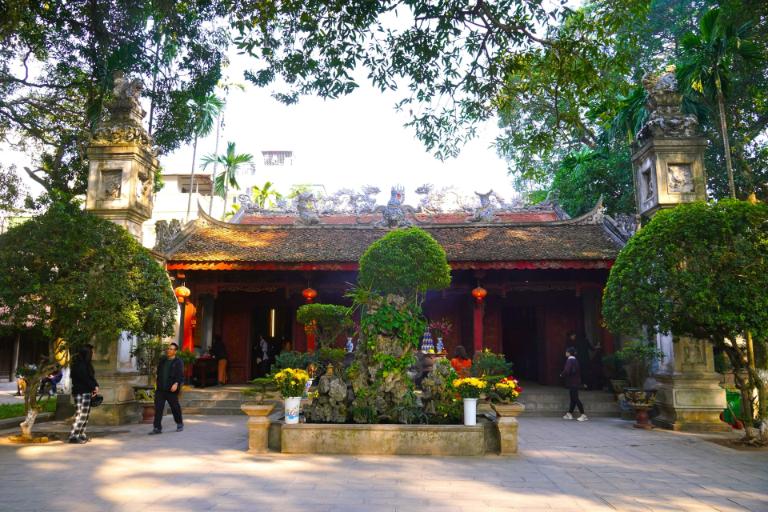
>>> Article for you: Tran Quoc Pagoda: Hanoi’s Oldest and Most Revered Buddhist Site
Courtyard and Surroundings
Quan Thanh Temple’s courtyard provides a tranquil haven from Hanoi’s busy streets. The courtyard, surrounded by old trees and stone walkways, offers guests a place to meditate. The courtyard’s symmetrical design reflects the harmony and balance found in Taoism. The little pond in the middle, which stands for serenity and cleanliness, heightens the spiritual ambiance of the temple.
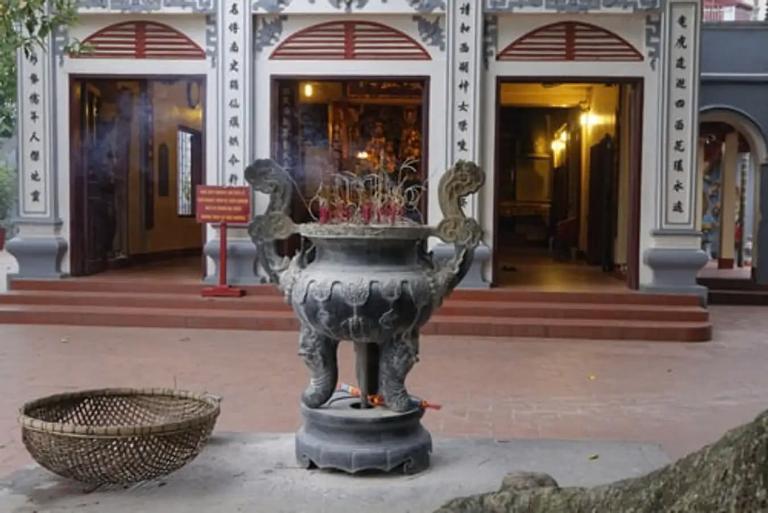
Ancient Stele and Inscriptions
Quan Thanh Temple’s collection of antiquated steles and inscriptions, many of which are from the temple’s early days, is another intriguing aspect of the site. These steles are enormous stone slabs that have poems, religious texts, and historical accounts engraved on them. They provide an insight into the lengthy past and cultural significance of the temple in Vietnam. The spiritual beliefs and cultural values of the era are reflected in these inscriptions, which also serve as documentation of the temple’s construction and renovation.
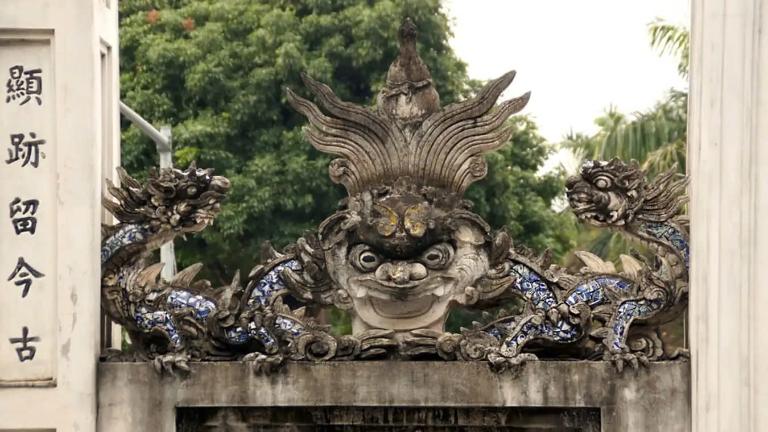
Intricate Wood Carvings
Visitors are welcomed into the temple by a plethora of finely detailed wood carvings that adorn the altars, pillars, and beams. Each of the numerous mythological animals, floral designs, and religious symbols that are depicted in these sculptures has a specific meaning in Vietnamese culture. The superb craftsmanship displays the skills of old craftspeople. The intricate carvings showcase the profound spiritual and cultural principles ingrained in the architecture of the temple.
>>> Let’s see more: The Bach Ma Temple: Discover Hanoi’s Spiritual Gem
How to Visit Quan Thanh Temple: A Useful Guide
Here’s a tutorial to help you get the most out .
- November through April, the milder months, are the ideal times to explore temples. There are less people about and the weather is beautiful.
- Quan Thanh Temple is located in the Ba Dinh district of Hanoi. You can reach the temple by taxi, bus, or motorbike.
- Admission to Quan Thanh is free. The temple is open to visitors every day from 8:00 AM to 5:00 PM.
- When visiting Quan Thanh Temple, it’s important to observe proper etiquette. Dress modestly, and remove your shoes before entering the temple grounds. Be respectful of the temple’s sacred atmosphere.
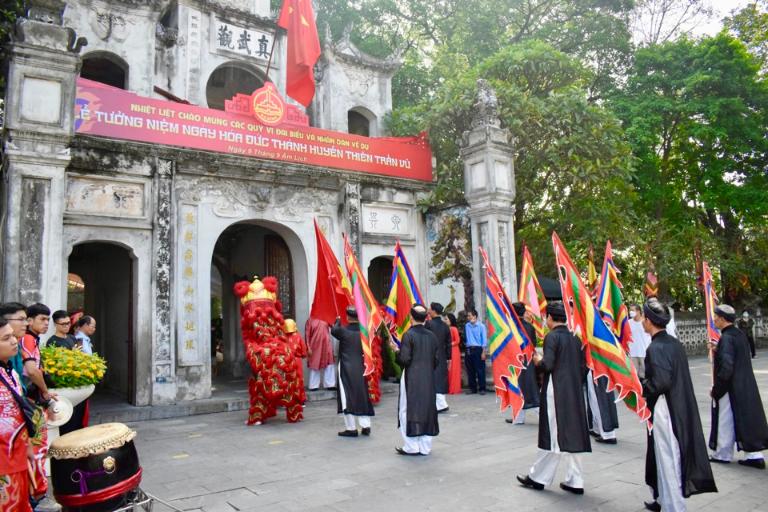
Quan Thanh Temple is much more than just an ancient building; it’s a living testament to Hanoi’s rich cultural, spiritual, and architectural heritage. So next time you’re in Vietnam’s bustling capital, make sure to take a detour into the calm, mystical world of this sacred temple.
Related:












Be the first to comment!